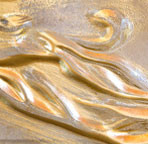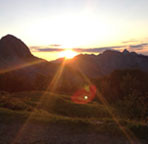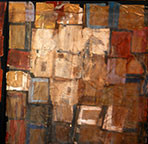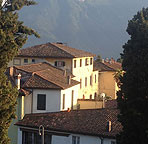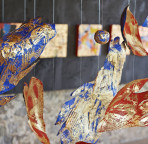Art’s theological dimension has its origin in God’s own art, the natural beauty of Creation. Indeed, the human participates in that natural beauty by virtue of being one of God’s creatures. The human creature, however, participates in God’s art in another way. He and she are able to contemplate it. In doing so, the human creature catches an intriguing and wondrous glimpse of itself. In the beauty of God’s work, we catch a glimpse of our own beauty. Beauty, natural or the work of human hands, has an intrinsic reference to the mystery of our own creatureliness. For various reasons, our age appears to reject or ignore this wondrous reference in its artistic expressiveness.
The other reason for the crisis in art is that our age has forgotten that the experience of Beauty, that is, the beautiful, is a complex, intrinsically communal experience that cannot be easily categorized. The beautiful has to do with what moves the heart and thus the grotesque and unattractive can also manifest beauty. ( . . . )
[T]heology recognizes that Beauty shines through the suffering in this world through its communal dimension. Theology discerns the beautiful in the face of a crucified man through the lens of the community that gathers around the foot of his cross. Indeed, it is the communal dimension of art that allows the beautiful to shine through the most tragic depiction of the human condition. Without the communal dimension of art, artistic depictions of suffering lend themselves to despair or cynicism, or worse, sadism.
–Alejandro Garcia-Rivera, A Wounded Innocence: Sketches for a Theology of Art
In another “sketch” exploring theology and works of art, Alejandro Garcia-Rivera considers the powerful healing and hope so often reported by those who visit the Vietnam Veteran’s Memorial in Washington, D.C. The stipulation presented to the designers that all the names of those killed, missing in action, or still held as prisoner’s of war be listed on the memorial presented one kind of artistic challenge, but a second directive charged the panel of jurors to choose a design which would “begin the healing process, a reconciliation of the grievous divisions wrought by war”. Regardless of the designer’s own faith background the artistic expression of healing and reconciliation the designing of the Memorial demanded participate in the complex and communal apprehension of beauty which Garcia-Rivera speaks of.
Garcia-Rivera goes on to say: “The memorial’s artistic power comes from its ability to bring presence to a broken relationship. Presence is the essential ingredient of the Wall’s healing power. At this point one can ask about the therapeutic nature of the aesthetics of presence. Is the aesthetics of presence something that takes place in the psychological depths of the beholder? Or is the aesthetics of presence something that resides in the memorial itself? Does the healing process take place within the beholder? Or is it the art of the Wall itself that heals the beholder? Put this way, the insufficiency of the therapeutic explanation becomes self-evident. If healing takes place solely by the beholder’s own powers, then the artistic contribution of the Wall becomes irrelevant. If the power to heal resides solely on the art of the Wall itself, then the aesthetic experience of the beholder becomes irrelevant.”
It was Garcia-Rivera’s express hope that the examples he fleshes out in his writing will encourage the search for the theological dimension in all profound works of art. Comments welcome.


